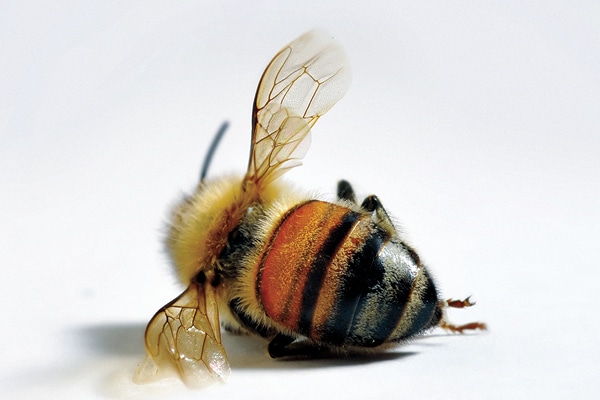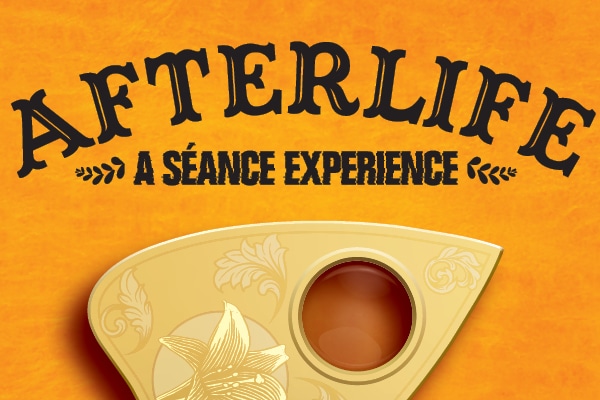Oct 2023
Presenting “Dreamscape” – an original contemporary impressionist masterpiece by Canadian Muslim artist Nada Khatib.



Oct 2023
Presenting “Dreamscape” – an original contemporary impressionist masterpiece by Canadian Muslim artist Nada Khatib.

Sept 2023 – Jan 2024
IYINISIWIN is an immersive installation that challenges our current perceptions and invites us to rediscover our interconnectedness in the universe. Departing from the dominant narrative of human exceptionalism, this experience, which is rooted in Indigenous wisdom, unveils the profound intelligence, knowledge and wisdom displayed in the natural world.

2023
IMPOSSIBLE GEOMETRIES is the inaugural experience featured in EYEPOOL, THEMUSEUM’s new immersive digital gallery. This immersive exhibition takes guests on a journey through ten unique audiovisual worlds, each exploring the captivating elements of visual design, interaction, and play.

2023
On at THEMUSEUM from November 12, 2022 – February 4, 2023 Murdoch Mysteries: The Exhibition, transports you behind the scenes of this internationally acclaimed show. Step behind the camera and immerse yourself in the fascinating history, science, and fashion of the series.

2022
With hundreds of unique artefacts and memorabilia forming a multimedia exhibition, including some on loan from the Stones’ private collection, UNZIPPED offers a comprehensive and engaging multimedia experience that gives fans an immersive look behind the curtain at the world’s greatest rock band.

2021
Featuring the artwork of Rolling Stones guitarist and acclaimed artist Ronnie Wood, the show, a North American Premiere, as part of a broader festival for the Region complemented the exclusive Canadian premiere of UNZIPPED.

2021
On June 24, 2019 the City of Kitchener council unanimously declared a climate emergency and we sounded the ALARM. It is time to take Action and Learn about our effects on climate. We must Adapt our lifestyles, take Responsibility and Mobilize climate action now!

2020
Land Back Camp: Our Voices On Exhibition August 19, 2020 to December 18, 2020 Land Back Camp: Our Voices is a series of photos that shares the words of Indigenous folx and Settlers at O:se Kenhionhata:tie. They have reclaimed a small portion of Victoria Park for over sixty days now.

2020
AFTERLIFE | A Séance Experience Featuring The Ghost of Thomas Lacey will explore the themes surrounding death that are meant to challenge and enlighten, while plunging you head-first into the question – What does death mean to you?

2019
FLOW | The Menstruation Exhibition. Join THEMUSEUM in discovering, discussing, and destigmatizing the natural process of menstruation through dialogue, art and a healthy dose of reality.

2018
INTERACTION, curated by Jane Tingley and Alain Thibault, is a multi-modal art exhibition that spans the fourth floor of THEMUSEUM, as well as two satellite locations in Kitchener and Waterloo: Communitech and the Centre for International Governance Innovation (CIGI).

2017
A Cause for Celebration? First Things First presents the work of three contemporary Indigenous artists and one new Canadian artist who deal with issues of past and present, healing and justice, hope and vision. Diverse in their practices, these artists create work that speaks to present day issues, problems and solutions that emphasize the universality of human experiences.

2017
QUANTUM: The Exhibition premiered October 14, 2016 at THEMUSEUM and was produced by the Institute of Quantum Computing (IQC) at the University of Waterloo. This ground breaking exhibition was selected as part of the Signature Initiative of the Government of Canada’s sesquicentennial celebration, INNOVATION150, which celebrates 150 years of Canadian innovation.

2016
We marked Terry Fox’s heroic Marathon of Hope by presenting the most comprehensive exhibition ever organized on the run and Terry’s remarkable and continuing legacy.

2015
Dinosaurs | The Edge of Extinction uncovered a century of research about both Triceratops and Tyrannosaurus Rex – two of the most well-known dinosaurs – and how they lived until the Cretaceous-Tertiary extinction. It will reveal the interdependence between the species, their environment, and the forces that shaped both their life and extinction.

2014
Unwrapping Egypt revealed the secrets of an ancient culture, featuring over 400 museum-quality replica artifacts focusing on the world-famous tomb of King Tutankhamun. Covering two levels of THEMUSEUM, visitors were invited to marvel at the incredible 5,000 years of Egyptian history and culture including Pharaonic, Greek and Roman, Coptic and Islamic artifacts in addition to the King Tutankhamun artifacts.

2013
James Cameron’s AVATAR James Cameron’s AVATAR: The Exhibition at THEMUSEUM in association with Christie Digital. AVATAR: The Exhibition offers an unprecedented, first-hand look inside the making of the highest-grossing film of all time.

2013
Treasures of China Featuring the Dazu Rock Carvings Treasures of China featuring the Dazu Rock Carvings showcases the North American premiere of 48 ancient Chinese sculptures depicting a fusion of Buddhist, Taoist and Confucian beliefs, dating back as far as the 10th Century AD.

2012
ADD COLOUR | A Yoko Ono Exhibit YOKO ONO is a multi-media artist whose thought provoking work challenges people’s understanding of art and the world around them. Yoko gained fame in New York at the beginning of the 1960s.

2012
Rethinking Art and Machine showcased the work of pioneer artists who addressed the relationship between art and electronic technology, light, graphics, robots, and virtual reality dating back to the 1960’s. The artists included Jim Campbell, Manfred Mohr, Alan Rath, Daniel Rozin and Peter Vogel.

2011
This exhibition closed in 2011 and is not currently offered at THEMUSEUM On April 15, 1912, the ship once called unsinkable, fell to the bottom of the ocean floor. In 2011, 98 years later, THEMUSEUM welcomed visitors to pay tribute to this tragedy at Titanic: The Artifact Exhibition.

2011
SEARCHING FOR TOM | Tom Thomson: Man, Myth, and Masterworks SEARCHING FOR TOM will lead visitors through Thomson’s life and mysterious death, his influence on Canadian art, and how contemporary artists are now interpreting his landscapes.

2010
Our Body: The Universe Within Winter 2010 An examination of the human body as never before seen in Waterloo Region – with the use of real human body specimens. The “Our Body: The Universe Within” exhibition features the human anatomy via real human bodies.

2009
Andy Warhol’s Factory Featuring the original exhibit, The Art, Inspiration and Appropriation of Andy Warhol, this show took a look at Warhol’s prolific career and ongoing legacy through over sixty authentic Warhol’s and works by a dozen contemporary artists appropriating Warhol today.

2008
Discovering Chimpanzees: The Remarkable World of Jane Goodall sparked interest with students and educators through an interactive exploration of Dr. Jane Goodall’s life work with chimpanzees, including replicas of her work tent and jungle scenes.

Oct 2023
Presenting “Dreamscape” – an original contemporary impressionist masterpiece by Canadian Muslim artist Nada Khatib.

Sept 2023 – Jan 2024
IYINISIWIN is an immersive installation that challenges our current perceptions and invites us to rediscover our interconnectedness in the universe. Departing from the dominant narrative of human exceptionalism, this experience, which is rooted in Indigenous wisdom, unveils the profound intelligence, knowledge and wisdom displayed in the natural world.

2023
IMPOSSIBLE GEOMETRIES is the inaugural experience featured in EYEPOOL, THEMUSEUM’s new immersive digital gallery. This immersive exhibition takes guests on a journey through ten unique audiovisual worlds, each exploring the captivating elements of visual design, interaction, and play.

2023
On at THEMUSEUM from November 12, 2022 – February 4, 2023 Murdoch Mysteries: The Exhibition, transports you behind the scenes of this internationally acclaimed show. Step behind the camera and immerse yourself in the fascinating history, science, and fashion of the series.

2022
With hundreds of unique artefacts and memorabilia forming a multimedia exhibition, including some on loan from the Stones’ private collection, UNZIPPED offers a comprehensive and engaging multimedia experience that gives fans an immersive look behind the curtain at the world’s greatest rock band.

2021
Featuring the artwork of Rolling Stones guitarist and acclaimed artist Ronnie Wood, the show, a North American Premiere, as part of a broader festival for the Region complemented the exclusive Canadian premiere of UNZIPPED.

2021
On June 24, 2019 the City of Kitchener council unanimously declared a climate emergency and we sounded the ALARM. It is time to take Action and Learn about our effects on climate. We must Adapt our lifestyles, take Responsibility and Mobilize climate action now!

2020
Land Back Camp: Our Voices On Exhibition August 19, 2020 to December 18, 2020 Land Back Camp: Our Voices is a series of photos that shares the words of Indigenous folx and Settlers at O:se Kenhionhata:tie. They have reclaimed a small portion of Victoria Park for over sixty days now.

2020
AFTERLIFE | A Séance Experience Featuring The Ghost of Thomas Lacey will explore the themes surrounding death that are meant to challenge and enlighten, while plunging you head-first into the question – What does death mean to you?

2019
FLOW | The Menstruation Exhibition. Join THEMUSEUM in discovering, discussing, and destigmatizing the natural process of menstruation through dialogue, art and a healthy dose of reality.

2018
INTERACTION, curated by Jane Tingley and Alain Thibault, is a multi-modal art exhibition that spans the fourth floor of THEMUSEUM, as well as two satellite locations in Kitchener and Waterloo: Communitech and the Centre for International Governance Innovation (CIGI).

2017
A Cause for Celebration? First Things First presents the work of three contemporary Indigenous artists and one new Canadian artist who deal with issues of past and present, healing and justice, hope and vision. Diverse in their practices, these artists create work that speaks to present day issues, problems and solutions that emphasize the universality of human experiences.

2017
QUANTUM: The Exhibition premiered October 14, 2016 at THEMUSEUM and was produced by the Institute of Quantum Computing (IQC) at the University of Waterloo. This ground breaking exhibition was selected as part of the Signature Initiative of the Government of Canada’s sesquicentennial celebration, INNOVATION150, which celebrates 150 years of Canadian innovation.

2016
We marked Terry Fox’s heroic Marathon of Hope by presenting the most comprehensive exhibition ever organized on the run and Terry’s remarkable and continuing legacy.

2015
Dinosaurs | The Edge of Extinction uncovered a century of research about both Triceratops and Tyrannosaurus Rex – two of the most well-known dinosaurs – and how they lived until the Cretaceous-Tertiary extinction. It will reveal the interdependence between the species, their environment, and the forces that shaped both their life and extinction.

2014
Unwrapping Egypt revealed the secrets of an ancient culture, featuring over 400 museum-quality replica artifacts focusing on the world-famous tomb of King Tutankhamun. Covering two levels of THEMUSEUM, visitors were invited to marvel at the incredible 5,000 years of Egyptian history and culture including Pharaonic, Greek and Roman, Coptic and Islamic artifacts in addition to the King Tutankhamun artifacts.

2013
James Cameron’s AVATAR James Cameron’s AVATAR: The Exhibition at THEMUSEUM in association with Christie Digital. AVATAR: The Exhibition offers an unprecedented, first-hand look inside the making of the highest-grossing film of all time.

2013
Treasures of China Featuring the Dazu Rock Carvings Treasures of China featuring the Dazu Rock Carvings showcases the North American premiere of 48 ancient Chinese sculptures depicting a fusion of Buddhist, Taoist and Confucian beliefs, dating back as far as the 10th Century AD.

2012
ADD COLOUR | A Yoko Ono Exhibit YOKO ONO is a multi-media artist whose thought provoking work challenges people’s understanding of art and the world around them. Yoko gained fame in New York at the beginning of the 1960s.

2012
Rethinking Art and Machine showcased the work of pioneer artists who addressed the relationship between art and electronic technology, light, graphics, robots, and virtual reality dating back to the 1960’s. The artists included Jim Campbell, Manfred Mohr, Alan Rath, Daniel Rozin and Peter Vogel.

2011
This exhibition closed in 2011 and is not currently offered at THEMUSEUM On April 15, 1912, the ship once called unsinkable, fell to the bottom of the ocean floor. In 2011, 98 years later, THEMUSEUM welcomed visitors to pay tribute to this tragedy at Titanic: The Artifact Exhibition.

2011
SEARCHING FOR TOM | Tom Thomson: Man, Myth, and Masterworks SEARCHING FOR TOM will lead visitors through Thomson’s life and mysterious death, his influence on Canadian art, and how contemporary artists are now interpreting his landscapes.

2010
Our Body: The Universe Within Winter 2010 An examination of the human body as never before seen in Waterloo Region – with the use of real human body specimens. The “Our Body: The Universe Within” exhibition features the human anatomy via real human bodies.

2009
Andy Warhol’s Factory Featuring the original exhibit, The Art, Inspiration and Appropriation of Andy Warhol, this show took a look at Warhol’s prolific career and ongoing legacy through over sixty authentic Warhol’s and works by a dozen contemporary artists appropriating Warhol today.

2008
Discovering Chimpanzees: The Remarkable World of Jane Goodall sparked interest with students and educators through an interactive exploration of Dr. Jane Goodall’s life work with chimpanzees, including replicas of her work tent and jungle scenes.